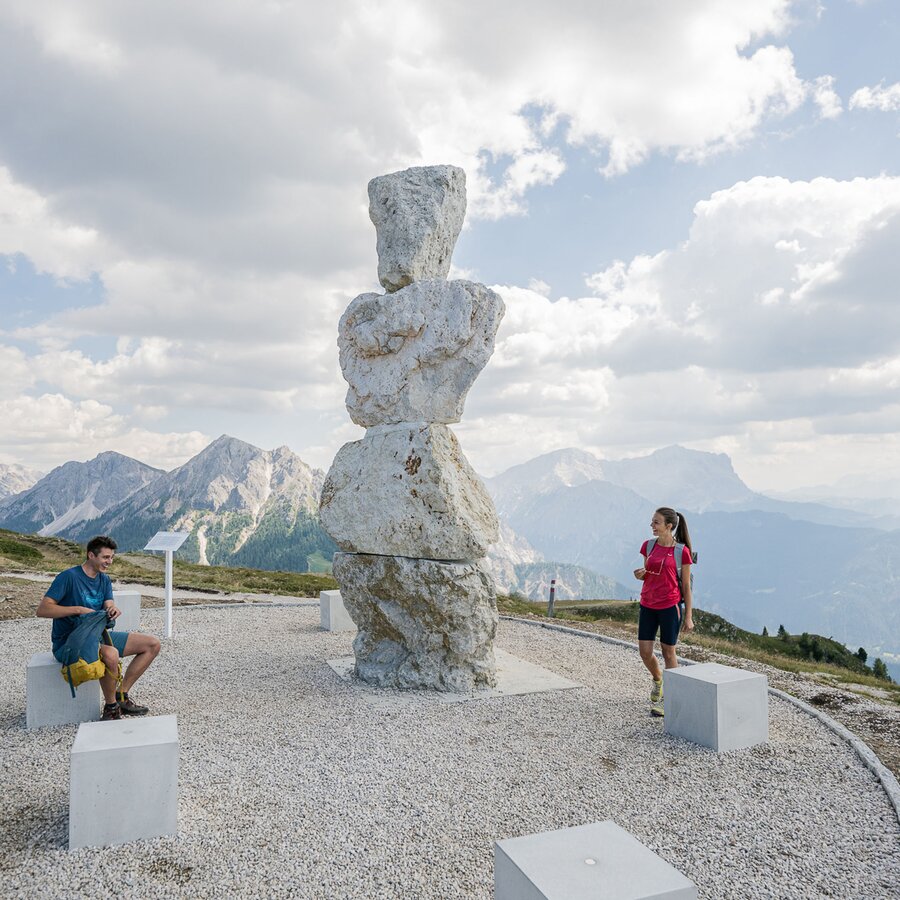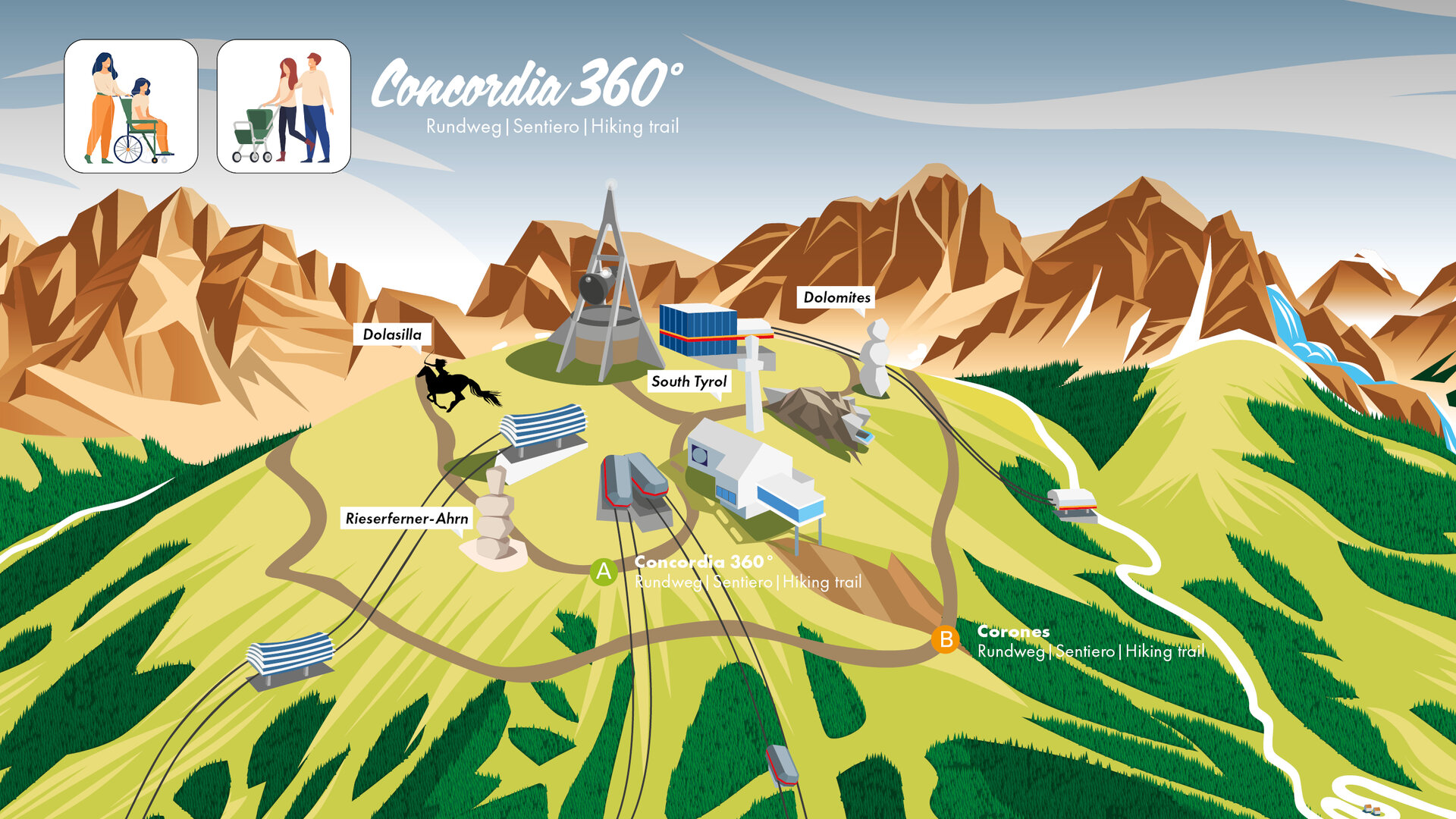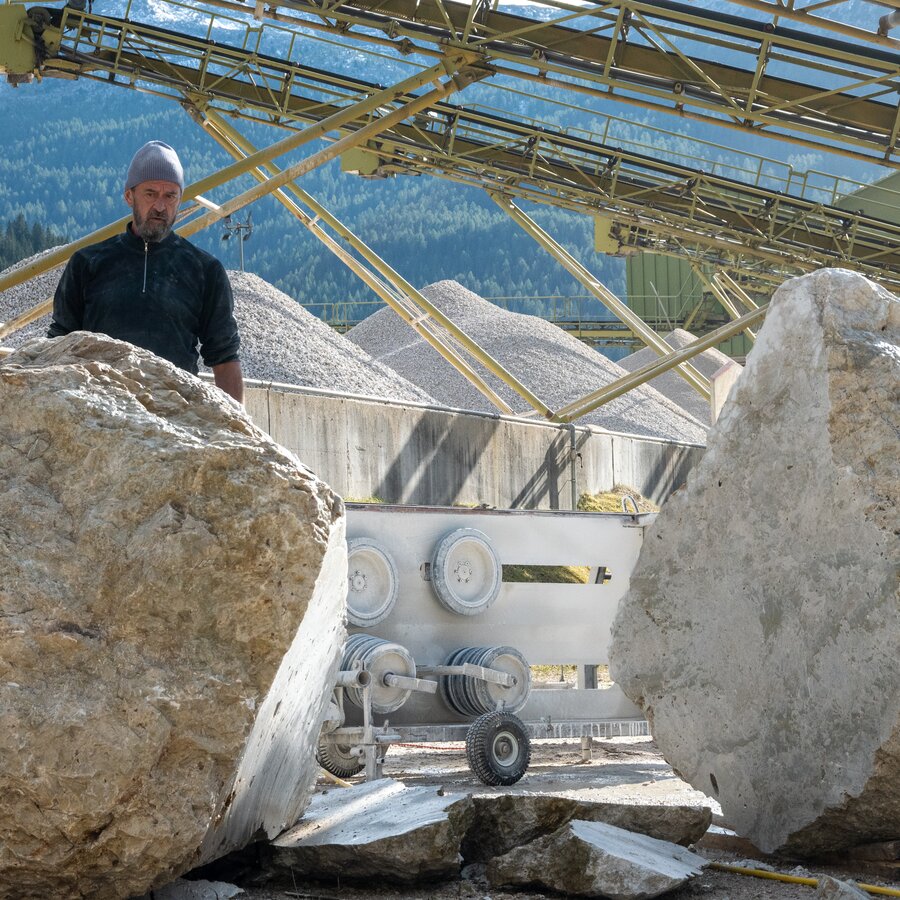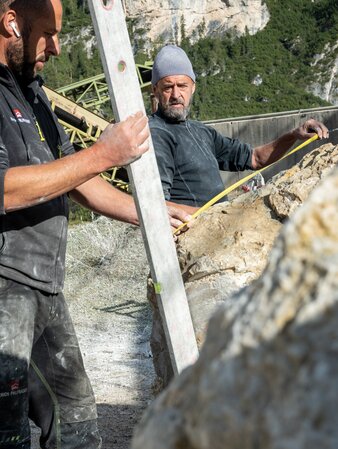


This 5.20 m high stone sculpture was realised from 4 blocks of crystalline dolomite stone by Helmut Pizzinini. It symbolises the Dolomites in the south and is located on the south-western slope of the Kronplatz. Let your gaze wander over the surrounding mountains and admire the panorama of the beautiful, majestic Dolomites.



The dolomitic rock represents the Dolomites in the south. It is a crystalline, monomineral stone of marine origin and, depending on its content of magnesium, it shimmers in its typical white, pink or grey colour. If it is combined with other minerals, dolomite can also be given a yellowish, greenish or brownish tone. Wondering what actually turns the dolomite into dolomite? In order to be classified as dolomite (apart from its shimmering and splintering surface), the rock must possess at least 90% of the dolomite mineral - otherwise the rock is defined as dolomitic limestone. Furthermore, the dolomite rock shows a fine to medium granular size as well as parallel mineral layers, which can consist of up to 5% of calcite, goethite, pyrite and marcasite. The structure is usually homogeneous and compact, but it can also appear porous and contain fillings of evaporites such as salt or gypsum. In this case, it is referred to as cellular dolomite.